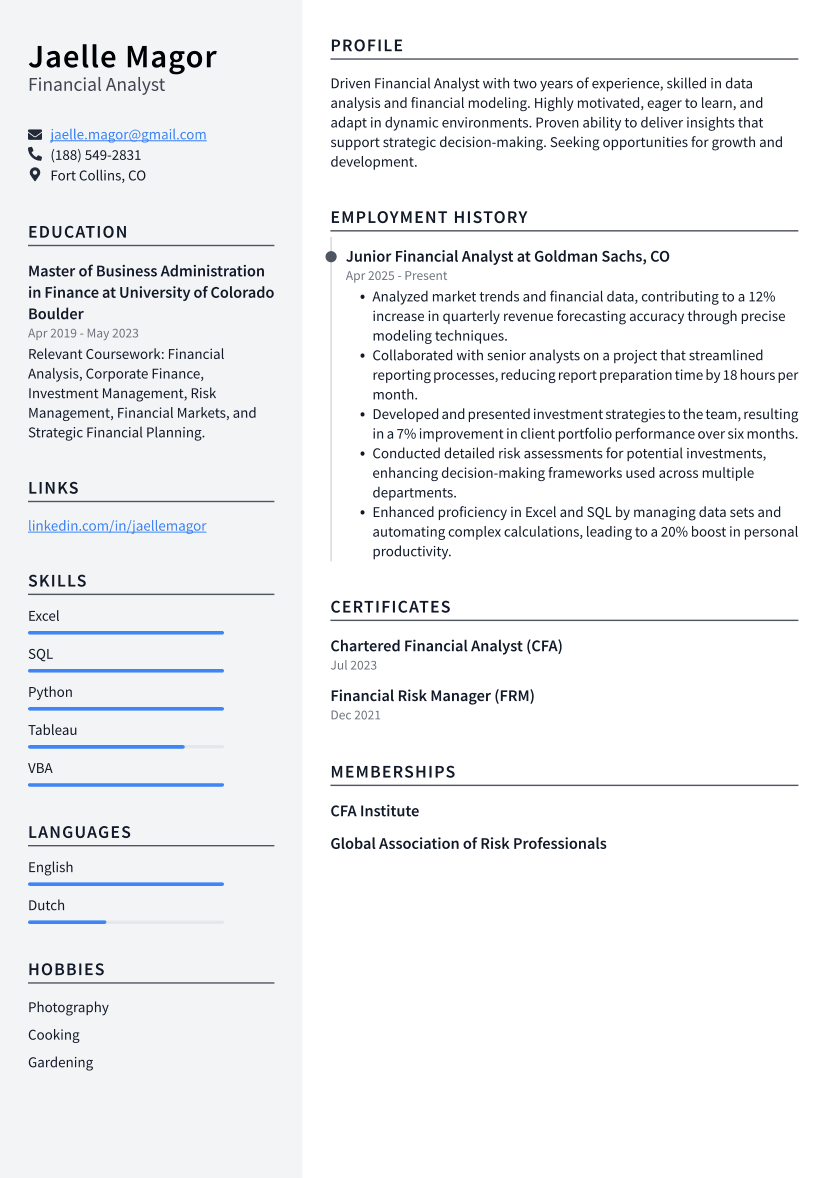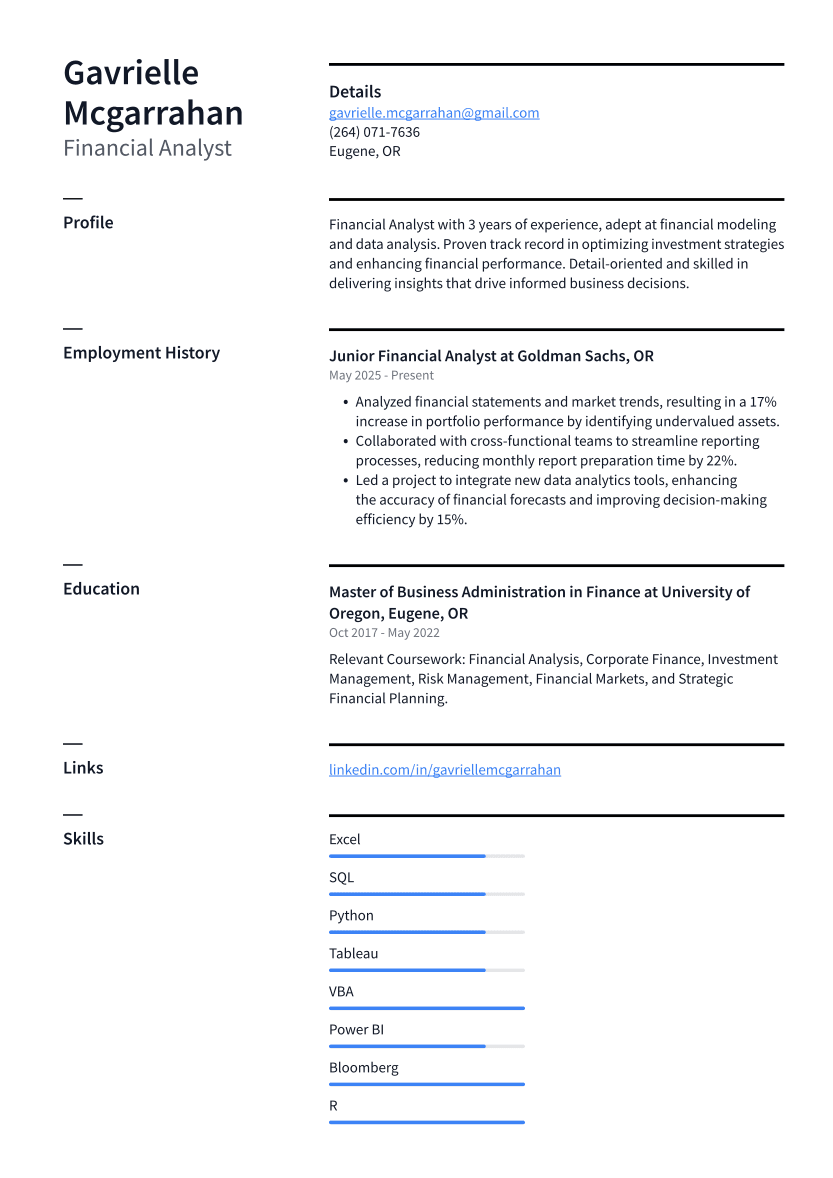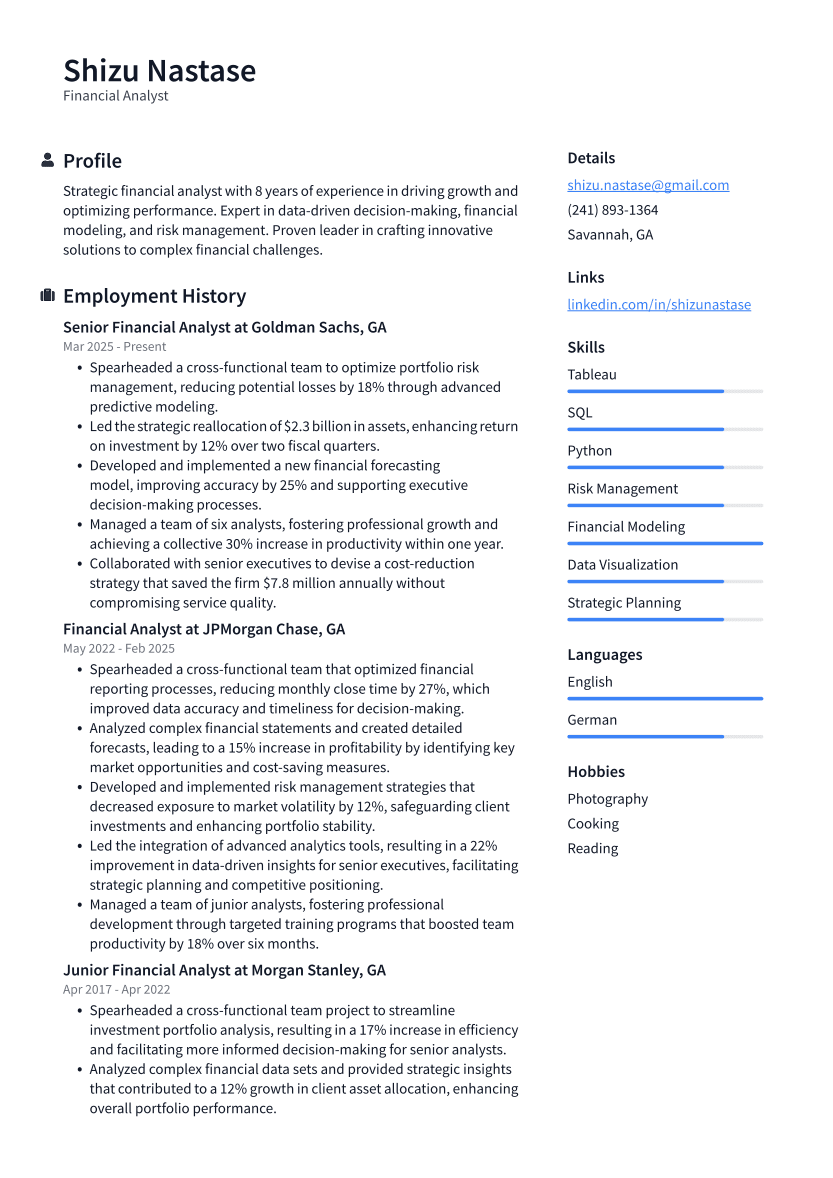Financial Analyst Resume Examples

In the wild jungle of job hunting, your resume is the machete that cuts through the thicket of competition, especially for a Financial Analyst role. This article will serve as your treasure map, guiding you to craft a resume that doesn’t just list numbers but makes them dance. Prepare to discover tips and tricks to turn your qualifications into a magnetic force that no hiring manager can resist.
What to Include on a Financial Analyst Resume
- Contact Information: Your name, phone, email, and LinkedIn.
- Summary: Brief snapshot of experience and career goals.
- Work Experience: Relevant jobs, responsibilities, and achievements.
- Skills: Key proficiencies and technical abilities.
- Education: Degrees, schools, and graduation dates.
Craft your resume's summary to highlight your keen analytical skills and deep understanding of financial modeling, emphasizing experience with budget forecasts and investment analysis. For the skills section, list proficiency in data analysis tools like Excel or Python, alongside familiarity with financial software such as Bloomberg Terminal or SAP.
Pro Tip: Crafting a Financial Analyst resume with precise skills and keywords ensures it navigates through ATS filters, increasing your chances of catching a hiring manager's eye.
How to Make Your Financial Analyst Resume Stand Out
Showcase achievements by emphasizing specific, quantifiable results like increasing revenue by a certain percentage or reducing costs through strategic analysis. Highlight these accomplishments with clear metrics, such as "boosted quarterly profits by 15% through data-driven forecasting and portfolio optimization.
Consistent Font and Size: Use a clean, professional font like Arial or Calibri, maintaining the same size throughout the document for text, with slightly larger sizes for headings to create a clear hierarchy.
Effective Use of White Space: Ensure there is ample spacing between sections and bullet points, allowing the content to breathe and enabling quick scanning by the reader.
Utilization of Bullet Points: Employ bullet points for listing responsibilities and achievements, aiding in the rapid absorption of key information without overwhelming blocks of text.
Pro Tip: Tailoring your Financial Analyst resume for each job can highlight relevant skills and experiences that match specific employer needs.
Resume Example 1: Entry-Level Financial Analyst
Entry-level Financial Analyst resumes focus heavily on educational achievements and basic skills, while mid-level or senior resumes highlight industry experience, leadership roles, and strategic contributions.
Resume Example 2: Experienced Financial Analyst
A mid-level Financial Analyst resume highlights developed skills and growing expertise, showing more experience than entry-level but less strategic leadership than senior roles.
Resume Example 3: Senior/Leadership Financial Analyst
A senior-level Financial Analyst resume showcases years of nuanced industry experience, mastery over complex financial strategies, leadership in high-stakes projects, and a record of significant contributions to business growth, qualities not typically found on entry-level or mid-level resumes.
Financial Analyst Resume Do’s, Don’ts, and Checklist
DO'S
- Highlight specific achievements with quantifiable metrics to demonstrate impact.
- Incorporate relevant financial software and analysis techniques to showcase technical proficiency.
- Tailor key skills and experiences to align with the job description for each application.
DON'TS
- Don't use vague jargon or clichés that clutter instead of clarify.
- Don’t overload your resume with irrelevant details; precision wins.
- Don't neglect quantifiable achievements; numbers speak volumes.
CHECKLIST
- Highlight quantifiable achievements.
- Use industry-specific terminology.
- Tailor content for each specific job.
- Do not clutter with irrelevant details.
- Avoid vague claims and overused buzzwords.
- Steer clear of unnecessary jargon.






